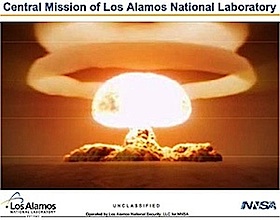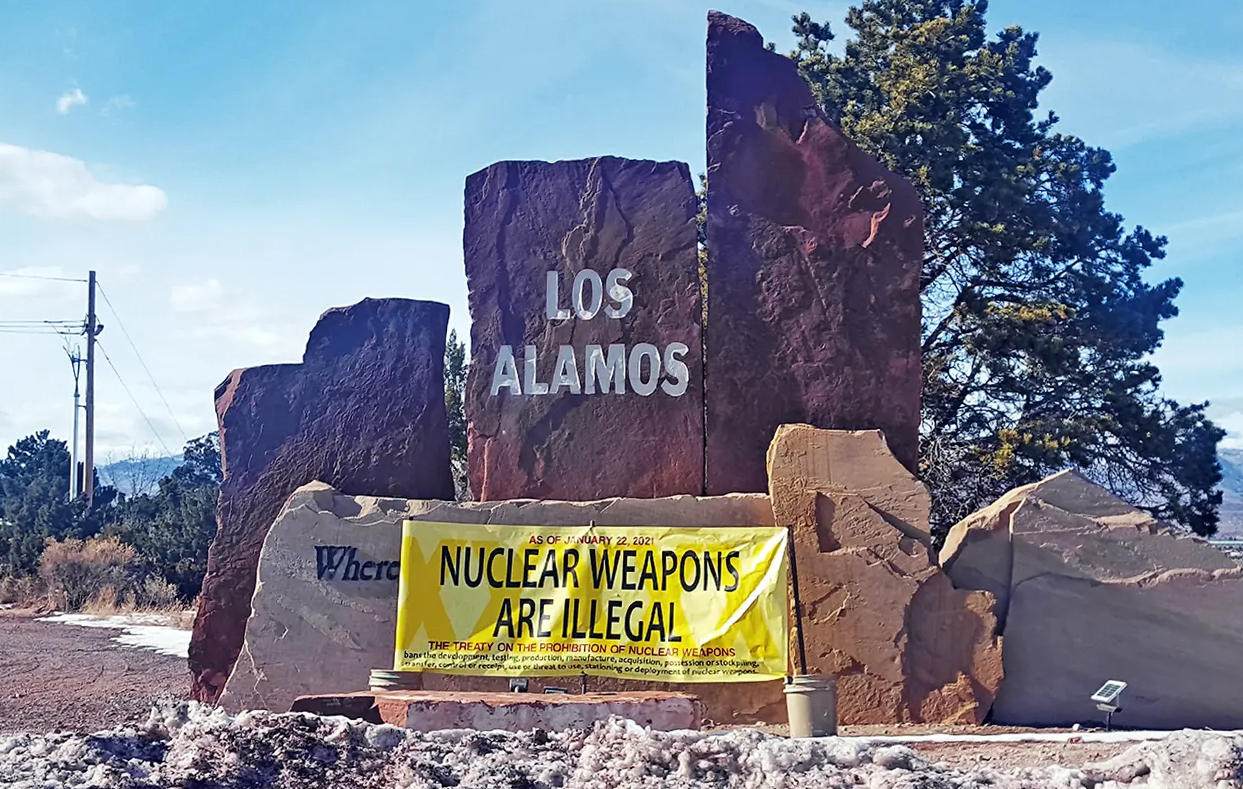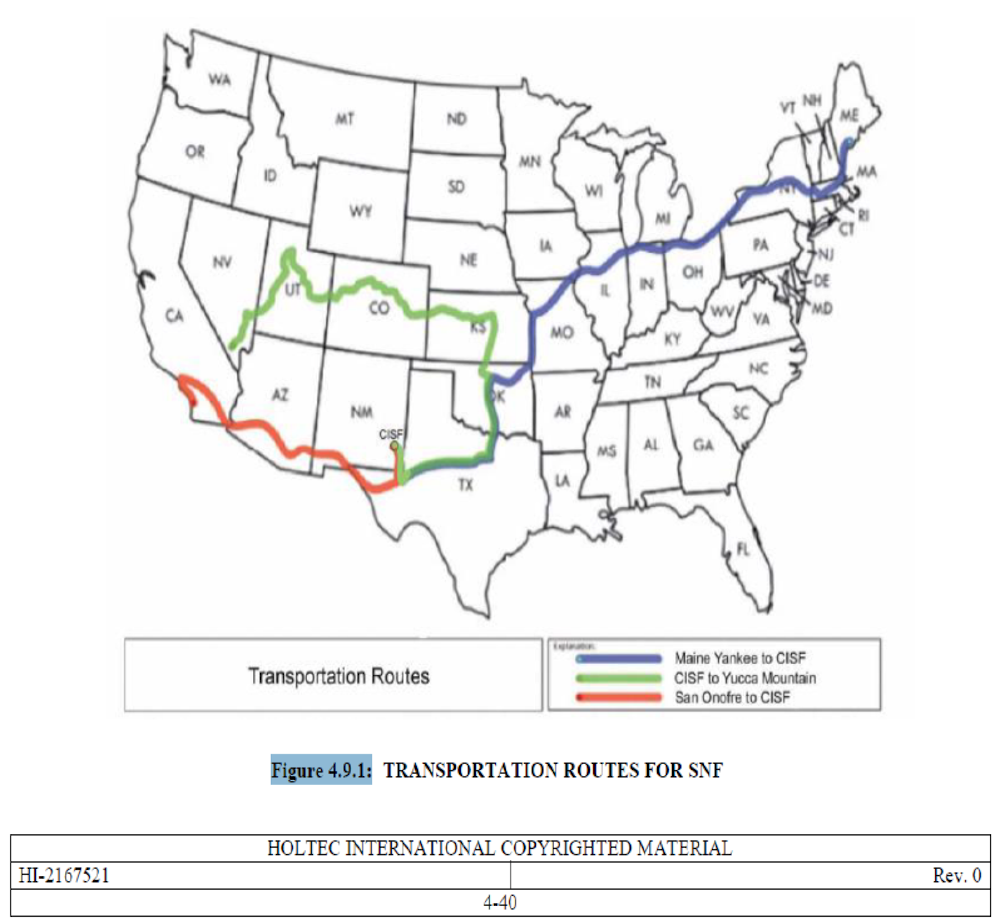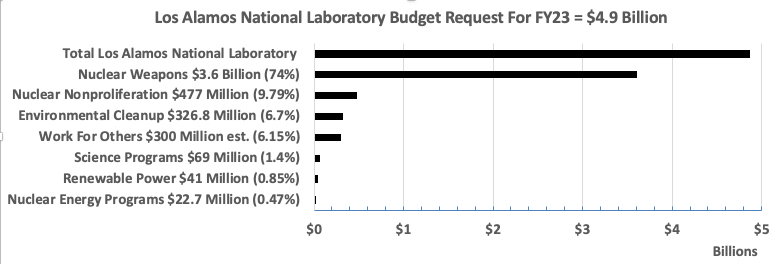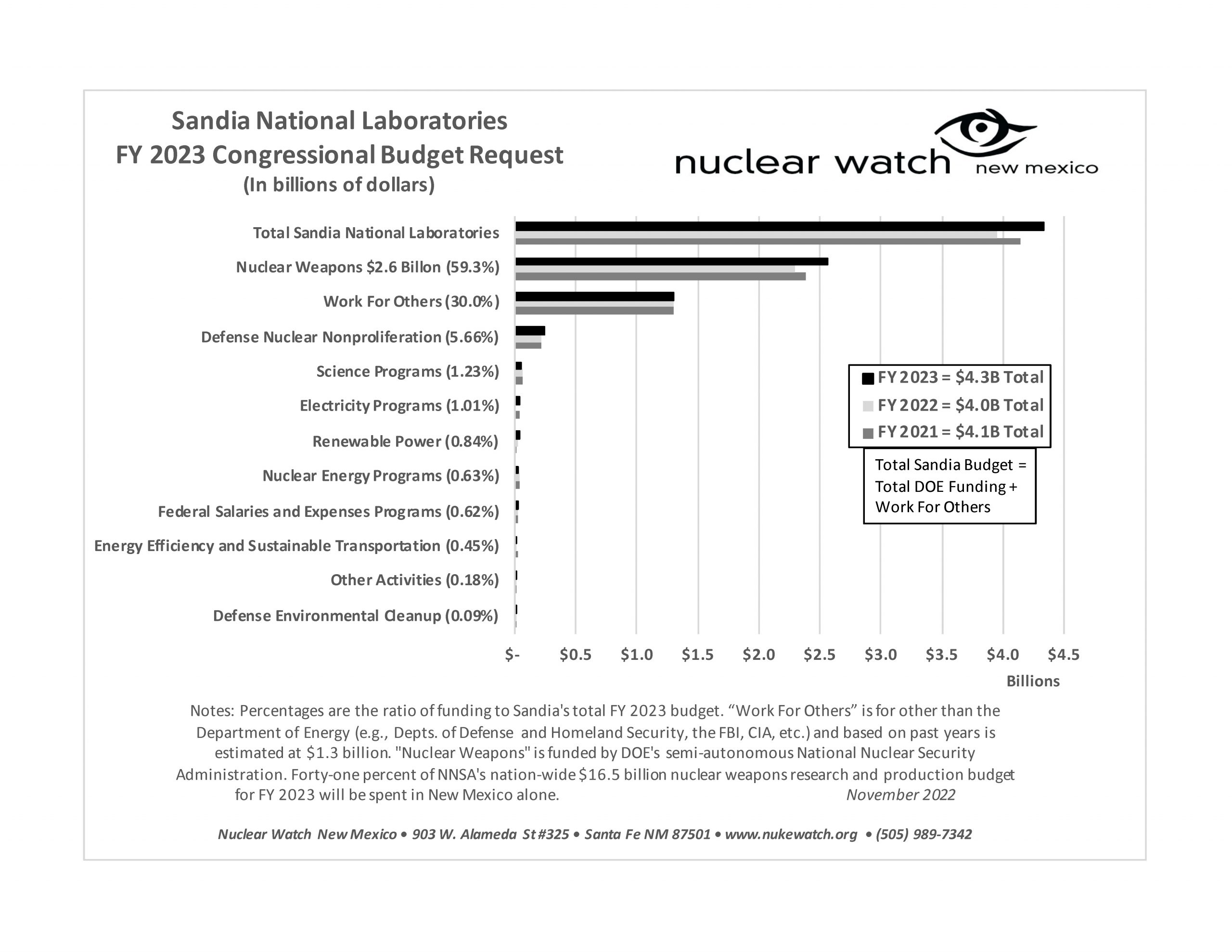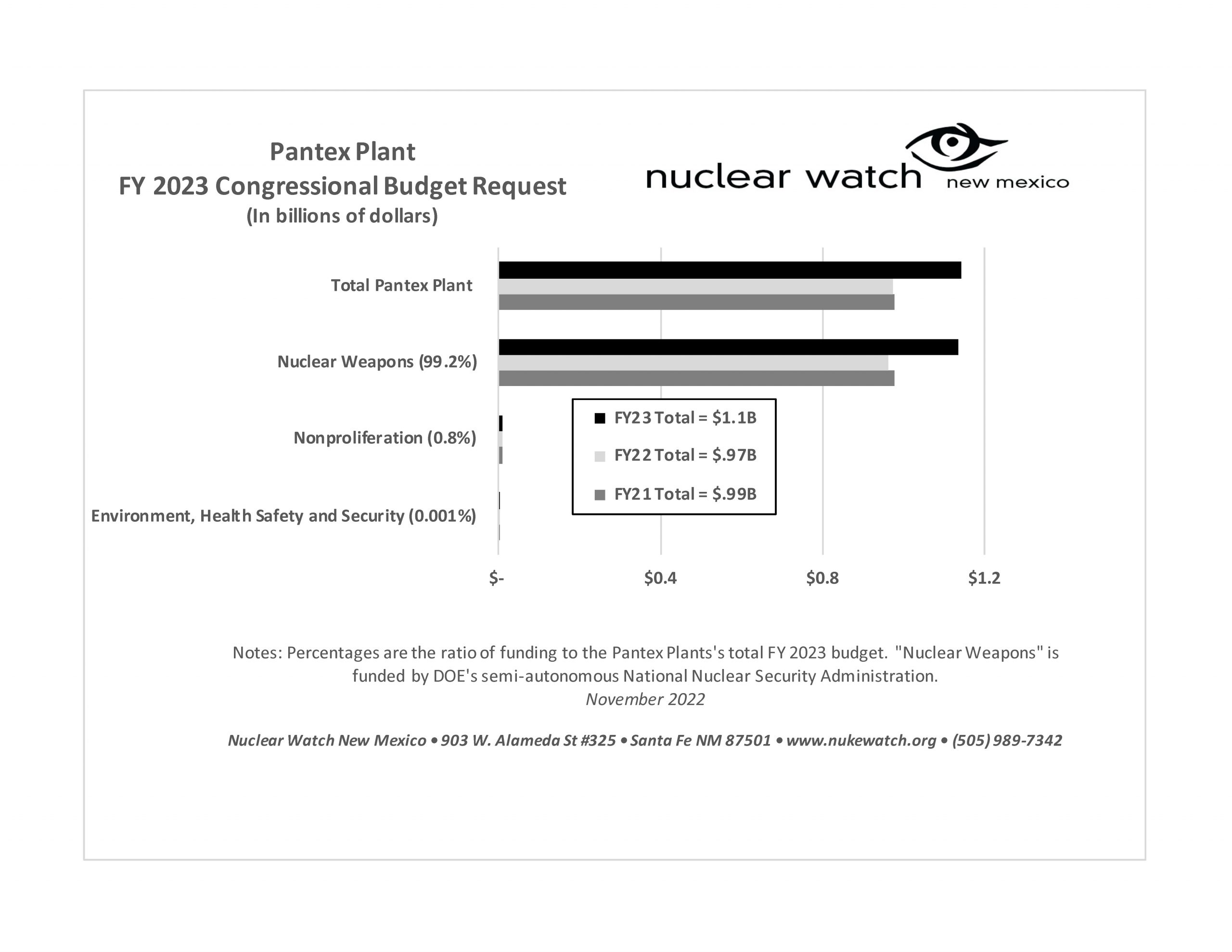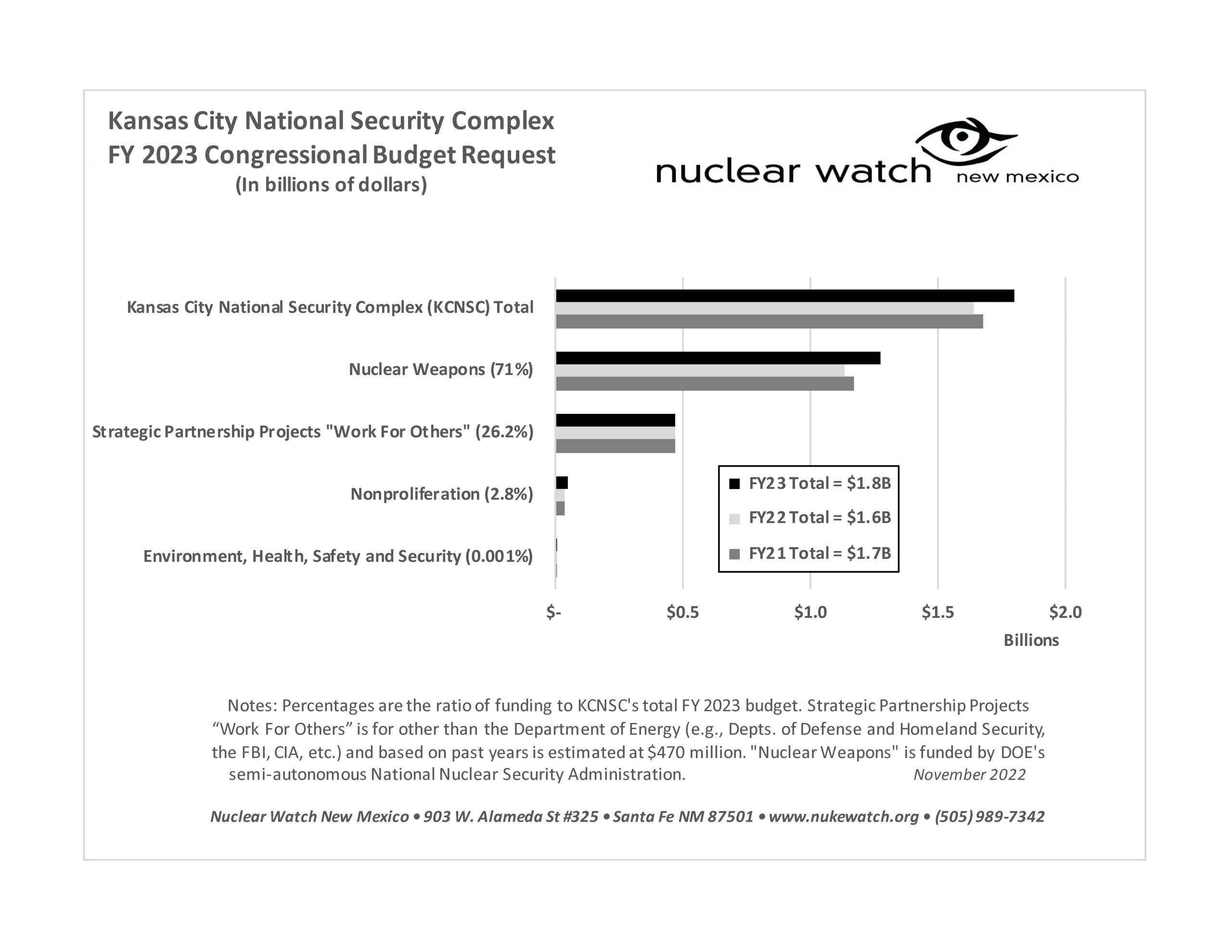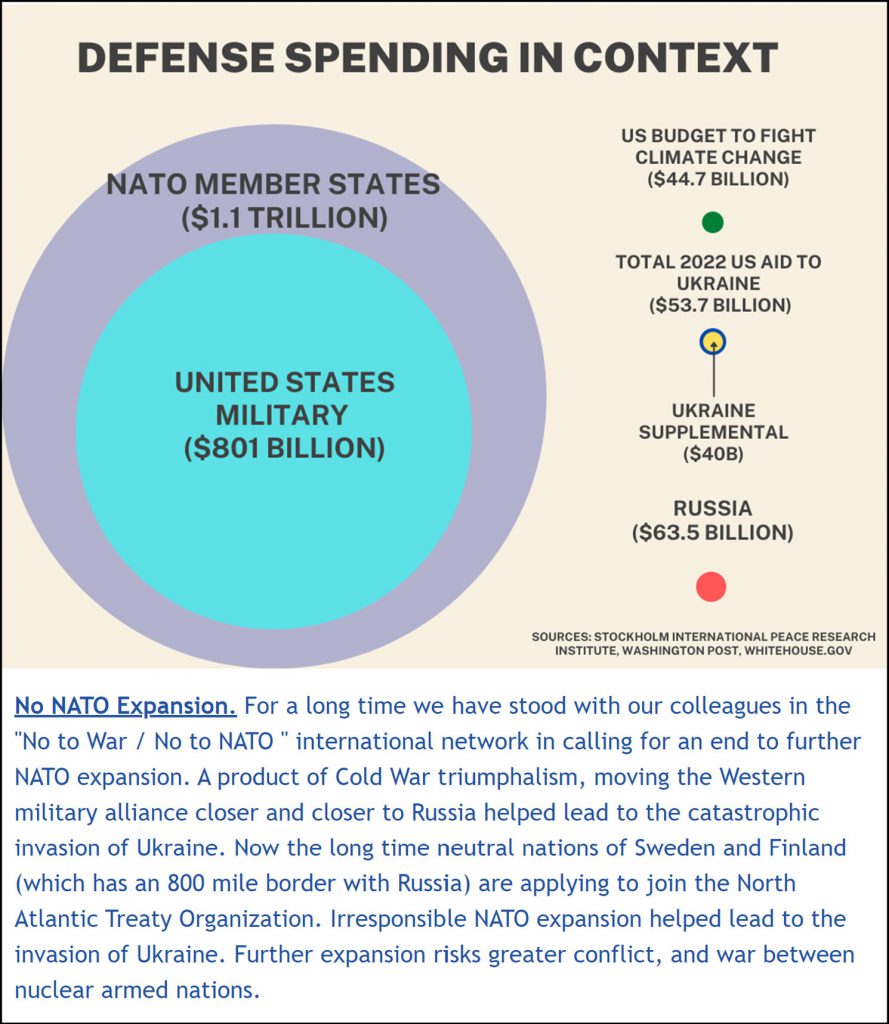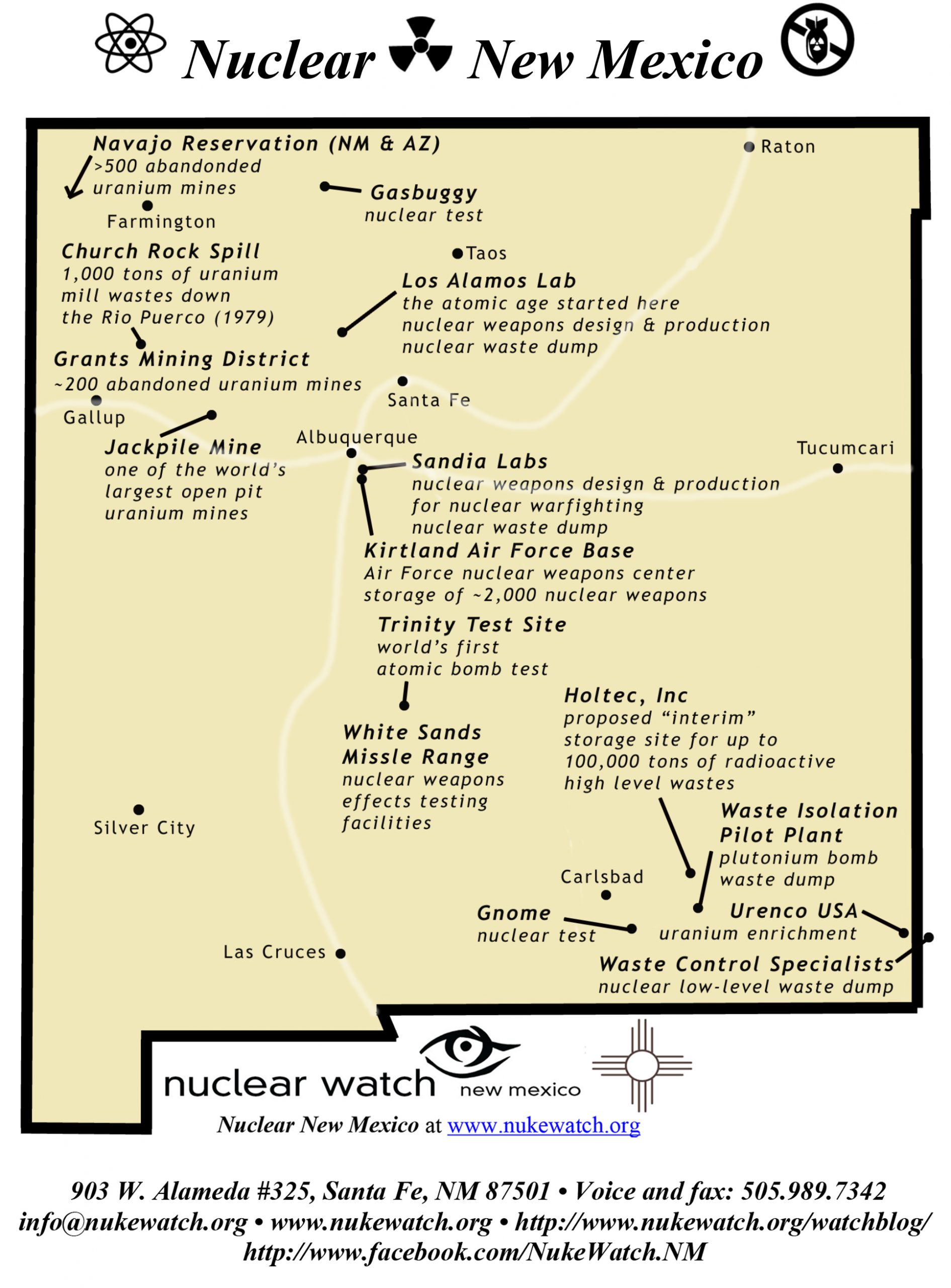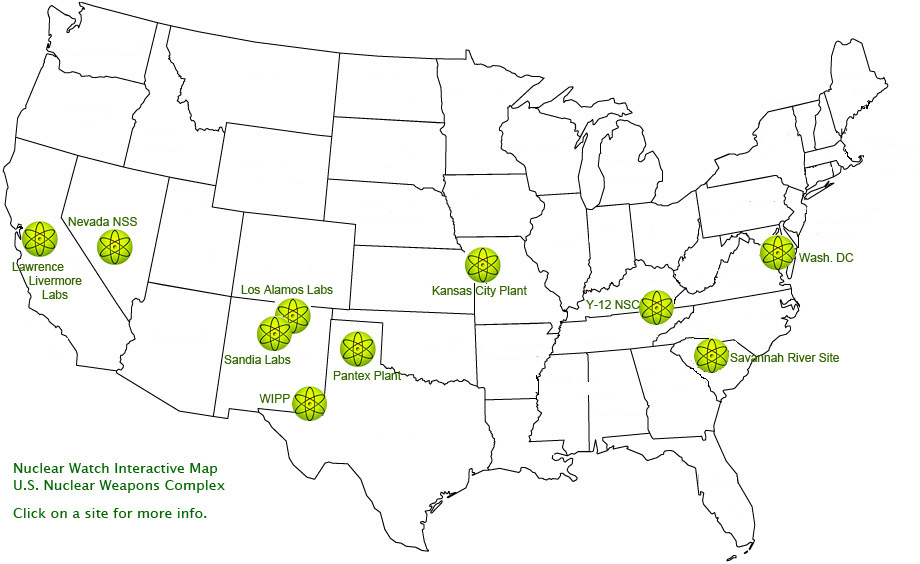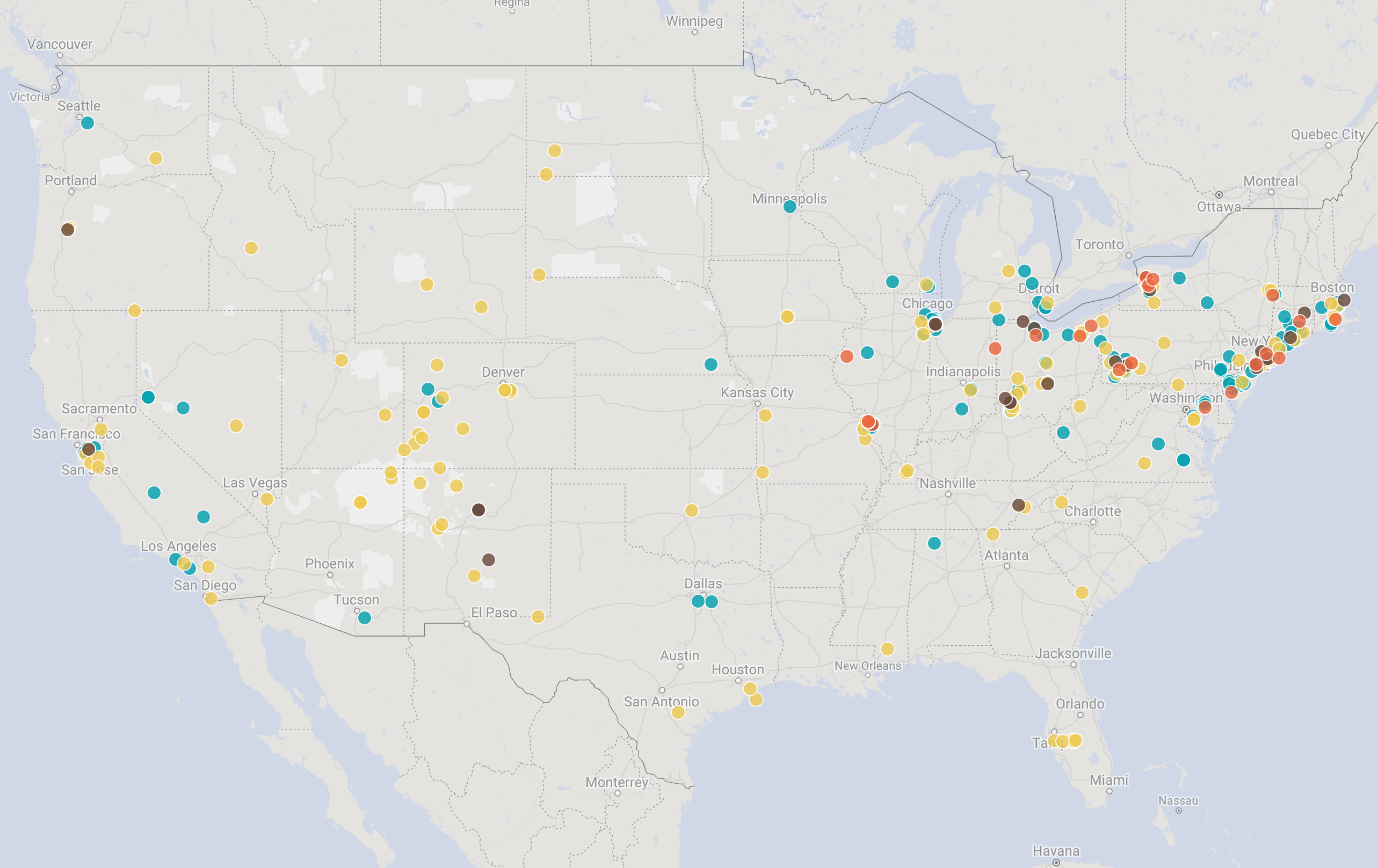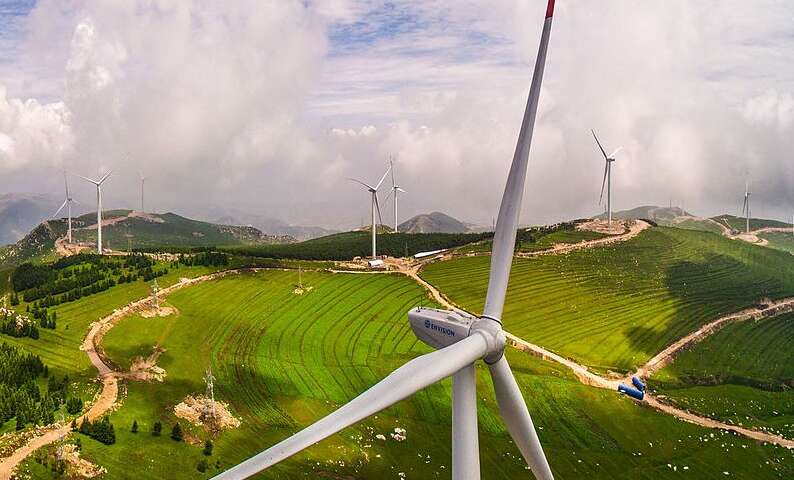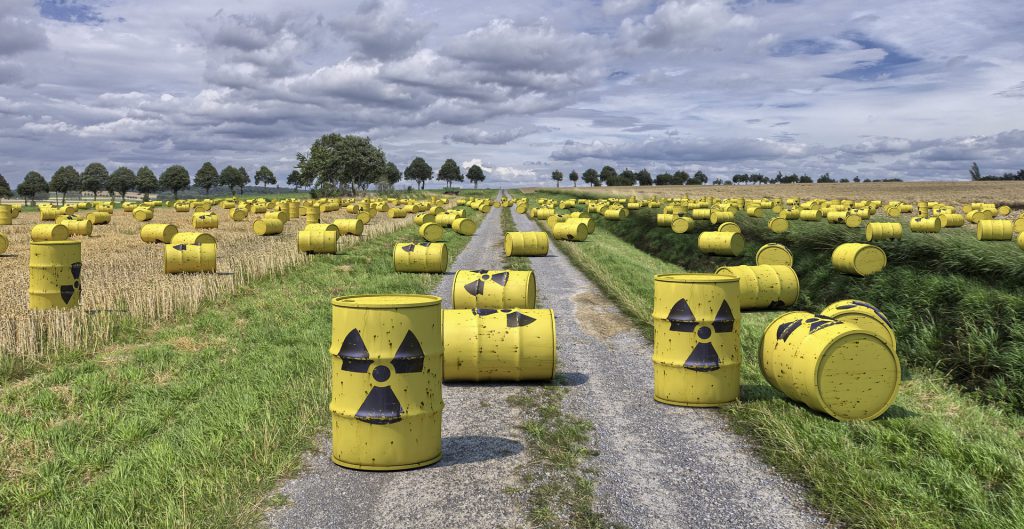QUOTE OF THE WEEK
Nothing Found
It seems we can’t find what you’re looking for. Perhaps searching can help.
LANL’s Central Mission: Los Alamos Lab officials have recently claimed that LANL has moved away from primarily nuclear weapons to “national security”, but what truly remains as the Labs central mission? Here’s the answer from one of its own documents:
LANL’s “Central Mission”- Presented at: RPI Nuclear Data 2011 Symposium for Criticality Safety and Reactor Applications (PDF) 4/27/11
Banner displaying “Nuclear Weapons Are Now Illegal” at the entrance in front of the Los Alamos National Lab to celebrate the Entry Into Force of the Nuclear Weapon Ban Treaty on January 22, 2021
Nothing Found
It seems we can’t find what you’re looking for. Perhaps searching can help.
Follow the Money!
Map of “Nuclear New Mexico”
Nuclear Watch Interactive Map – U.S. Nuclear Weapons Complex
In 1985, US President Ronald Reagan and and Russian President Mikhail Gorbachev declared that “a nuclear war cannot be won and must never be fought.”
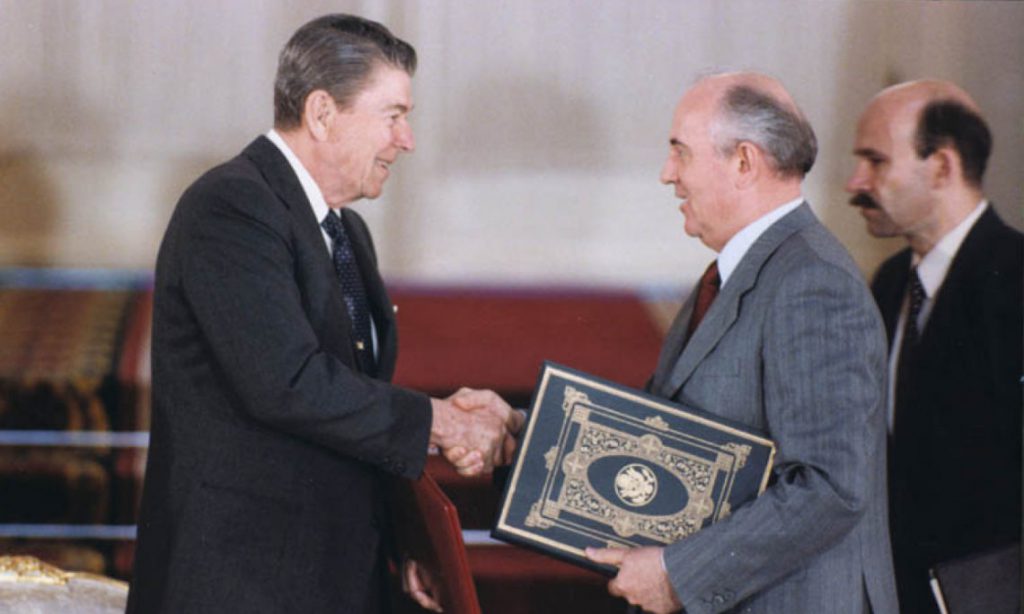
Waste Lands: America’s Forgotten Nuclear Legacy
The Wall St. Journal has compiled a searchable database of contaminated sites across the US. (view)
Related WSJ report: https://www.wsj.com
2022 BLOG POSTS
Nothing Found
It seems we can’t find what you’re looking for. Perhaps searching can help.
New & Updated
Activists Push Congress to Revive Probe Into Links Between Nuclear Plants and Cancer
“Nuclear Regulatory Commission killed study in 2015 after spending five years and $1.5 million on the effort”
BY: TERI SFORZA | ocregister.com
Scientists and activists were stunned back in 2015 when the Nuclear Regulatory Commission pulled the plug on what was designed to be the best study of cancer near nuclear power plants ever done.
The pilot study’s price tag was $8 million — a pittance in the NRC’s $1 billion budget — and five years of work had already gone into it. But it was killed because officials were convinced it would be too costly and couldn’t link reactors to disease, a Southern California News Group investigation found.
Last week, a petition with some 1,200 signatures demanding that the study resume went to members of Congress representing Southern and Central California.
Texas Governor Urges Trump To Oppose Nuclear Waste Plans
“It’s an unusual thing for environmentalists and oil companies to be on the same page, and we are on this issue,” says an Austin-based environmental advocate.
BY: Travis Bubenik, Courthouse News; | texasstandard.com

A view of an existing site in West Texas where a company wants to store highly radioactive waste from the nation’s nuclear power plants, one of two such proposals the Texas governor now says he opposes.
From Courthouse News Service:
Texas Governor Greg Abbott has come out against two rival plans to ship highly radioactive waste from the nation’s nuclear power plants to sites on the Texas-New Mexico border, saying either plan would be unsafe and would threaten the region’s sprawling Permian Basin oilfield.
“A stable oil and gas industry is essential to the economy, and crucial to the security of our great nation,” Abbott, a Republican, wrote in a letter to President Donald Trump on Wednesday. “Allowing the interim storage of spent nuclear fuel and high-level nuclear waste at sites near the largest producing oilfield in the world will compromise the safety of the region.”
The nuclear waste plans have for years drawn the ire of advocacy groups who worry about a range of possible environmental and safety threats, but oil and gas interests have become increasingly involved in the fight as well.
A coalition of oil companies and West Texas landowners called Protect the Basin was launched in 2018 to oppose the plans and has more recently stepped up its outreach. One of the coalition members, a ranching and oil company tied to one of the nation’s richest families, has been involved in fighting the issue all the way up to the D.C. Circuit.
Two’s a crowd: Nuclear and renewables don’t mix
“If countries want to lower emissions as substantially, rapidly and cost-effectively as possible, they should prioritize support for renewables, rather than nuclear power.”
BY: University of Sussex | techxplore.com
That’s the finding of new analysis of 123 countries over 25 years by the University of Sussex Business School and the ISM International School of Management which reveals that nuclear energy programs around the world tend not to deliver sufficient carbon emission reductions and so should not be considered an effective low carbon energy source.
Researchers found that unlike renewables, countries around the world with larger scale national nuclear attachments do not tend to show significantly lower carbon emissions—and in poorer countries nuclear programs actually tend to associate with relatively higher emissions.
U.S., Russia Move Toward Outline of Nuclear Deal, Administration Says
“Trump administration official’s comments suggest the two sides might be able to come to terms on broad principles”
BY: MICHAEL R. GORDON | wsj.com
 U.S. and Russian negotiators made progress Monday on a new framework accord that would freeze each side’s nuclear arsenal and outline the parameters for a detailed treaty that would be negotiated next year, a senior Trump administration official said.
U.S. and Russian negotiators made progress Monday on a new framework accord that would freeze each side’s nuclear arsenal and outline the parameters for a detailed treaty that would be negotiated next year, a senior Trump administration official said.
The accord, if it comes together in the coming month, would give each side something it has sought. President Trump would have a demonstration that his diplomacy toward Moscow has borne fruit, arriving before the November election. Russia would get an extension of the New START…
The Day Nuclear War Almost Broke Out
“In the nearly sixty years since the Cuban missile crisis, the story of near-catastrophe has only grown more complicated. What lessons can we draw from such a close call?”
“…what almost no one knew until four decades later—was that one of B-59’s torpedoes was carrying what the Soviets called “special ammunition.” The “special” part was a fifteen-kiloton nuclear warhead. Had Savitsky’s orders been carried out, chances are good that the Americans would have responded in kind, and a full-scale nuclear war would have broken out. There should, it seems, be a useful lesson to be learned from that frantic afternoon. But what, in God’s name, is it?”
BY: ELIZABETH KOLBERT | newyorker.com
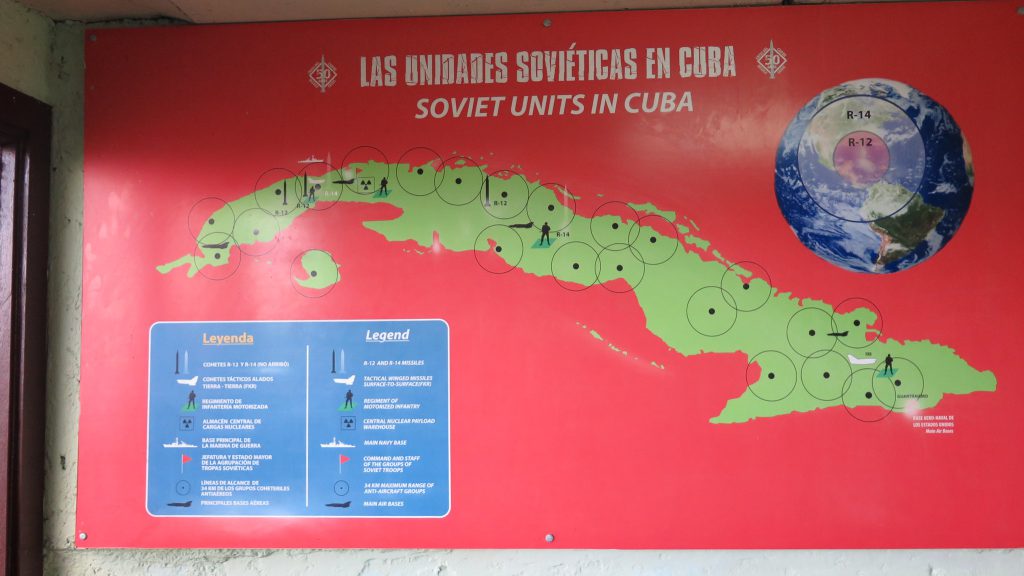
On October 27, 1962, a day that’s been described as the “most dangerous” in human history, a Soviet submarine designated B-59 was churning through the Sargasso Sea when suddenly it was rocked by a series of explosions. “It felt like you were sitting in a metal barrel, which somebody is constantly blasting with a sledgehammer,” Vadim Orlov, a communications specialist on board the sub, later recalled. “The situation was quite unusual, if not to say shocking, for the crew.”
Four weeks earlier, B-59 had been dispatched from the U.S.S.R. with three other so-called F-class subs as part of Operation Anadyr, Nikita Khrushchev’s top-secret effort to install ballistic missiles in Cuba. (The Anadyr is a river that flows into the Bering Sea; the code name was intended to make even soldiers participating in the operation believe they were headed somewhere cold.) Pretty much from the outset of the voyage, things had not gone well.
“For the sailors, this Cuban missile crisis started even before its beginning,” Ryurik Ketov, the captain of another Cuba-bound sub, once observed. The Atlantic that October was turbulent, and the pitching sea made it tough for the boats to maintain their desired speed.
“You have to hold on to something even in your sleep, or else you’ll fall off,” a crew member complained. Communications, too, were difficult. Once past Iceland, the subs had trouble contacting Moscow; for a while, according to Ketov, the only voices audible over the radio “were those of Murmansk fishermen.”
Oak Ridge Environmental Peace Alliance: Response to NNSA issuing Amended Record of Decision on EU operations at Y-12 Plant
GOVERNMENT ISSUES RECORD OF DECISION TO CONTINUE NUCLEAR WEAPONS PRODUCTION AT Y-12 COMPLEX IN OAK RIDGE, DOWNPLAYING RISK TO WORKERS AND PUBLIC CITIZENS SAY, “A BEGINNER’S CLASS IN DISSEMBLING”
The National Nuclear Security Administration issued an Amended Record of Decision for the Continued Operation of the Y-12 National Security Complex* on September 30, 2020. NNSA says the new decision updates its October 2019 AROD.
The AROD dismisses risks from earthquakes and declares that NNSA will continue to conduct nuclear weapons manufacturing operations in facilities that do meet environmental and safety codes for at least 20 more years under its Enriched Uranium program. This AROD is the result of a federal court decision in September 2019 in a case brought by the Oak Ridge Environmental Peace Alliance, Nuclear Watch New Mexico, the Natural Resources Defense Council and four individual plaintiffs. In that decision, Chief Judge Pamela Reeves ruled NNSA had not met the requirements of the National Environmental Policy Act. Judge Reeves vacated two Supplement Analyses and one previous AROD and ordered NNSA to conduct further analysis on the risks of earthquakes.
“The new Amended Record of Decision is a pretty respectable beginner’s class in dissembling,” said OREPA coordinator Ralph Hutchison. “The first lie is a big one, and easily disproved. NNSA says ‘The court further held that NNSA is not required to prepare a Supplemental Environmental Impact Statement for the UPF Project or the Extended Life Program.’ This is simply not true.
“The court explicitly did not make that finding; it would have been inappropriate. What the court did was tell NNSA they didn’t have to prepare a new or Supplemental EIS due to changed circumstances. Instead, they had to prepare a Supplement Analysis—one step earlier in the process—to determine whether or not a new or Supplemental EIS was required. That is the only purpose of an SA, and NNSA knows it. They just tried to spin it. Either that, or they think the court didn’t understand what it was saying.
SC Judge Freezes Federal Funds From $600 Million Plutonium Settlement
“A former Democratic state legislator, Sellers said that from his experience, he knows if the $600 million — or however much money there is — goes into the general fund, the money will not be spent on the counties impacted by the storage of plutonium.”
BY: JOHN MONK | thestate.com
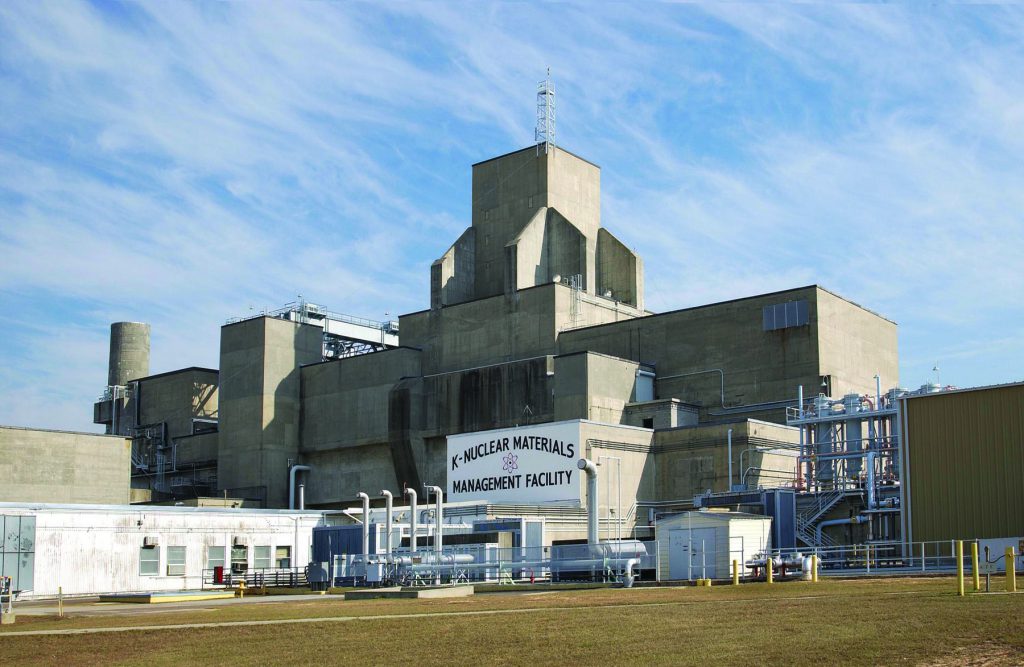
Credit SAVANNAH RIVER SITE / SRS.GOV
BARNWELL, SC – A state circuit judge on Wednesday issued a temporary injunction freezing $600 million in federal funds that came to South Carolina as a result of a political settlement in a long-running dispute over what to do with some 11 tons of deadly plutonium now stored at the Savannah River Site in Barnwell County.
Judge Clifton Newman issued the injunction against State Attorney General Alan Wilson shortly before noon Wednesday in response to a motion by State Sen. Brad Hutto, D-Orangeburg, who represents Barnwell County, Allendale County and five other counties in the area.
Newman’s injunction, issued from the bench in a Barnwell County courtroom, is temporary and within a month he is expected to hold another hearing that will fully air differing sides on what to do with the $600 million.
“All federal funds received by the state must be appropriated by the state in accordance with the federal purpose for which it was intended,” Hutto told the judge. Since the funds in the settlement were given by the federal government as compensation for the plutonium stored in their geographic area, they should generally be spent there in those impacted counties along the state’s southwestern boundary, Hutto argued.
It is essential that the “identity” of the federal funds be preserved before Wilson routes the money into the state’s general fund, where other lawmakers might seek to spend it for purposes outside those South Carolina counties Hutto represents, Hutto told the judge.
Compact Nuclear Fusion Reactor Is ‘Very Likely to Work,’ Studies Suggest
“…the hurdles to building a machine that can create and control a fusion plasma — a roiling ultrahot cloud of atoms that will damage or destroy anything it touches — are enormous.”
BY: HENRY FOUNTAIN | nytimes.com
Scientists developing a compact version of a nuclear fusion reactor have shown in a series of research papers that it should work, renewing hopes that the long-elusive goal of mimicking the way the sun produces energy might be achieved and eventually contribute to the fight against climate change.
Construction of a reactor, called Sparc, which is being developed by researchers at the Massachusetts Institute of Technology and a spinoff company, Commonwealth Fusion Systems, is expected to begin next spring and take three or four years, the researchers and company officials said.
Although many significant challenges remain, the company said construction would be followed by testing and, if successful, building of a power plant that could use fusion energy to generate electricity, beginning in the next decade.
DOE Activities Raise Safety Concerns about Plutonium at Three Facilities
“The DOE proposal to dispose of the useless MOX fuel pellets is unprecedented, but has been subjected to only a brief mention in an environmental analysis on pit production. Tom Clements, director of SRS Watch, says, “The analysis conducted on the disposal of the plutonium fuel is totally inadequate and a full Environmental Impact Statement (EIS) must be conducted before any repackaging and shipment to WIPP. ”
September 30, 2020 | nuclearactive.org
According to the Department of Energy (DOE), plans are under way to remove unused plutonium fuel from the Los Alamos National Laboratory (LANL). The uranium-plutonium fuel, containing around 26.4 kilograms (58.2 pounds) of weapon-grade plutonium, is called “mixed-oxide,” or MOX. In a late-August document, DOE stated that the MOX fuel, produced in France for a program at the Savannah River Site (SRS), would be disposed of as transuranic waste and therefore go to the Waste Isolation Pilot Plant (WIPP).
At present the MOX fuel, in the form of pellets, is stored at LANL’s PF-4 plutonium facility. DOE needs to empty PF-4 to have space for its planned annual production of up to eighty plutonium “pits”, or triggers, for nuclear weapons.
Four powerful players want a nuclear waste solution. What’s stopping them?
“The nuclear industry’s position in support of spent fuel legislation is tempered by a combination of reality and priorities. While the industry regularly testifies in favor of finding a long-term solution to the spent fuel problem, the reality is that state legislative prohibitions on the construction of new nuclear reactors are meaningless, given that no new reactors are planned in the foreseeable future. It is uneconomic and/or not politically viable to build a new reactor in the United States—even one of the small modular reactors under development.”
BY: JDAVID KLAUS | thebulletin.org
The 92-page platform adopted at the Democratic National Convention does not include a single sentence on the issue of how to manage the more than 80,000 tons of spent nuclear fuel sitting at 70 sites in communities across the country. The Republicans adjourned without adopting any new platform for 2020, leaving their 2016 platform in place—but it also did not address the nuclear waste issue.
Ironically, political interest in addressing the spent fuel issue is decreasing at a time when the number of closed nuclear plants in the United States is increasing—and it is common practice to level the plant and leave the spent fuel behind. If the issue had been as significant a political priority today as it was in the past, it would have been included in one or both of the platforms.
In its 2004 and 2008 platforms, the Democratic Party committed to “protect Nevada and its communities from the high-level nuclear waste dump at Yucca Mountain, which has not been proven to be safe by sound science.” Republicans, in their 2012 platform, focused on how “[t]he federal government’s failure to address the storage and disposal of spent nuclear fuel has left huge bills for States and taxpayers.”
Trump Administration Orders Assessment on Bolstering Nuclear Warheads as Talks With Russia Stall
“U.S. diplomats are trying to play hardball with Russia in negotiations over whether to extend New START.
“It’s very stupid,” added a former GOP arms control official who declined to be identified because he still advises the government. “It makes absolutely no sense to threaten to upload. It becomes a valid leveraging point only if the other side can’t do it. The Russians can do it, too.” ”
BY: DANIEL LIPPMAN, BRYAN BENDER & LARA SELIGMAN | politico.com
The Trump administration has asked the military to assess how quickly it could pull nuclear weapons out of storage and load them onto bombers and submarines if an arms control treaty with Russia is allowed to expire in February, according to three people familiar with the discussions.
The request to U.S. Strategic Command in Nebraska is part of a strategy to pressure Moscow into renegotiating the New Strategic Arms Reduction Treaty before the U.S. presidential election, the people said.
In making the request, the Trump administration wants to underscore that it is serious about letting the treaty lapse if Russia fails to meet U.S. demands. The negotiating team is leery that Russia is dragging out the talks in the hope that Joe Biden — who has pledged to extend New START under what Moscow believes will be more favorable terms than what this White House is offering — wins the election.
“It’s a clear signal that the costs for not negotiating before the election are going to go up,” said one of the people, who requested anonymity to relay sensitive discussions. The Trump administration is “trying to create an incentive, and it’s a real incentive, for the Russians to sit down and actually negotiate.”
The request for the assessment came in the last two weeks from a group of officials at the National Security Council and State, Defense and Energy departments that’s supporting Ambassador Marshall Billingslea in negotiations with Moscow to try to replace New START before it runs out in February.
Continue reading
U.S. Department of Energy Confirms 11.5 Metric Tons of Plutonium Stored at Savannah River Site; SRS Watch Supports DOE Assertion that Plutonium Storage “Not Posing any Additional Risk to Communities Surrounding the SRS”
https://srswatch.org/wp-content/uploads/2020/09/SRSW-news-on-SRS-plutonium-inventory-Sep-29-2020.pdf
The State of New Mexico Objects to Nuclear Fuel Storage Plan
“New Mexico is strongly objecting to federal nuclear regulators’ preliminary recommendation that a license be granted to build a multibillion-dollar storage facility for spent nuclear fuel from commercial power plants around the U.S.”
BY: SUSAN MONTOYA BRYAN / ASSOCIATED PRESS abqjournal.com
State officials, in a letter submitted Tuesday to the Nuclear Regulatory Commission, said that the site is geologically unsuitable and that technical analysis has been inadequate. They also say regulators have failed to consider environmental justice concerns and have therefore fallen short of requirements spelled out by federal environmental laws.
The letter also reiterates the state’s concerns that the storage facility would become a permanent dumping ground for the spent fuel, as the federal government has no permanent plan for dealing with the waste that has been piling up at nuclear power plants.
The officials pointed to a legacy of contamination in New Mexico that includes uranium mining and milling and decades of nuclear research and bomb-making at national laboratories, saying minority and low-income populations already have suffered disproportionate health and environmental effects as a result.
Given the concerns, state officials wrote that a draft environmental review of the project “fails to demonstrate that residents of New Mexico, including vulnerable populations, will be adequately protected from exposure to the radioactive and toxic contaminants that could be released to air and water by the proposed action.”
A group of Democratic state lawmakers also raised concerns.
Elected leaders in southeastern New Mexico support the project, saying it would bring jobs and revenue to the region and provide a temporary option for dealing with the spent fuel.
ACTION ALERTS
Nothing Found
It seems we can’t find what you’re looking for. Perhaps searching can help.
Nothing Found
It seems we can’t find what you’re looking for. Perhaps searching can help.
Interfaith Panel Discussion on Nuclear Disarmament - August 9
Nothing Found
It seems we can’t find what you’re looking for. Perhaps searching can help.
New Nuclear Media
Nothing Found
It seems we can’t find what you’re looking for. Perhaps searching can help.

